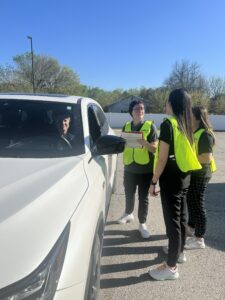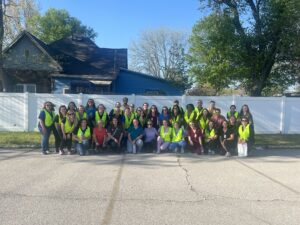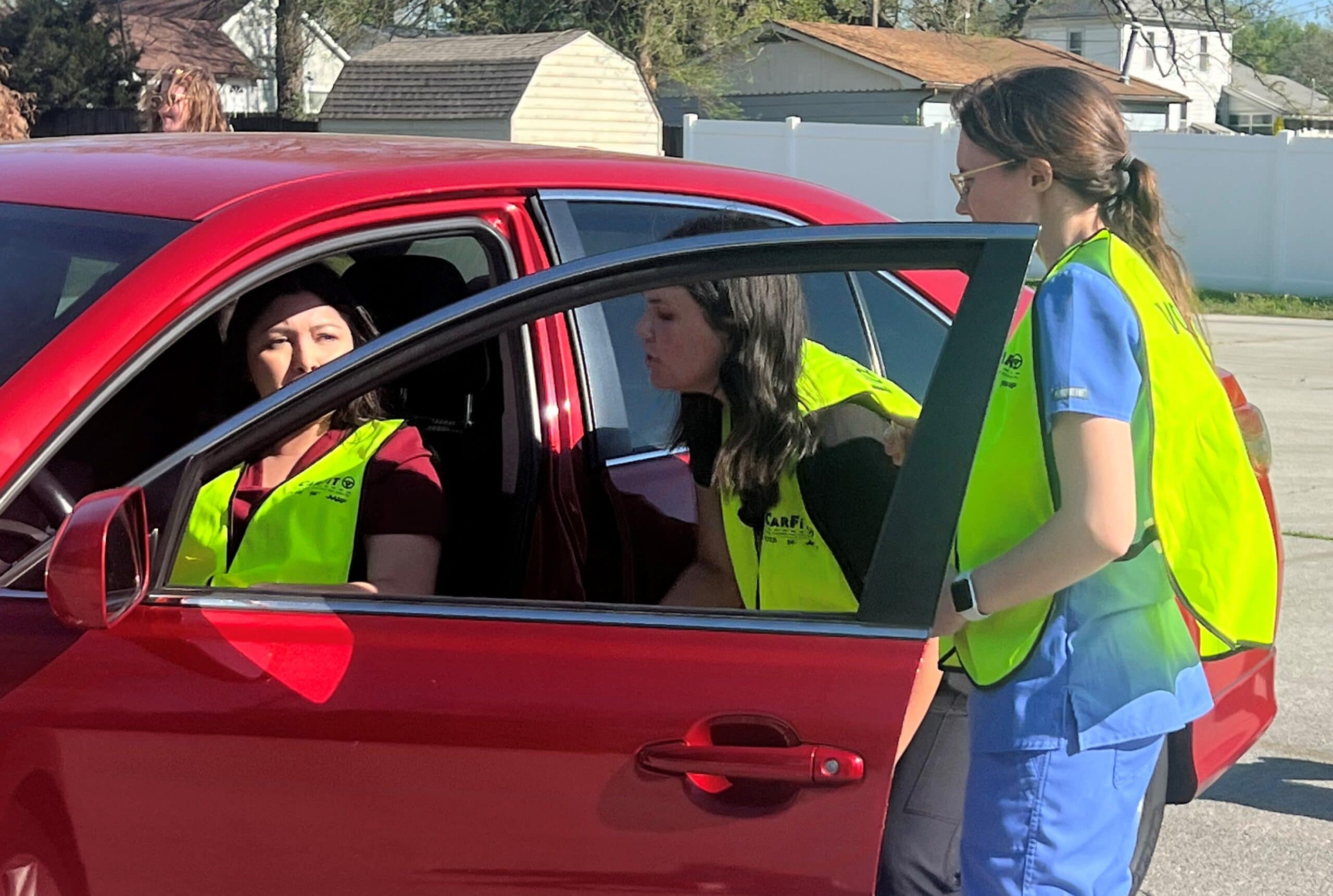Occupational Therapy Assistant Clinical Professor Helps Drivers “Fit” in Their Cars
| In a car-centric culture like the United States, most people don’t give much thought to how they physically interact with their cars. They generally just jump in the car and go. However, an awareness of how we “fit” in our cars should be an important safety consideration, especially as we age.
Kandy Salter, OTD, OTR/L, an assistant clinical professor and doctoral capstone coordinator for the UAMS/UA Occupational Therapy Doctoral (OTD) program, is working to improve that awareness in Arkansas. In March 2023, Salter became the only certified CarFit instructor in Arkansas.
“I’m excited to begin tr aining others to become volunteers and event coordinators. CarFit is an incredibly rewarding volunteer experience that helps to promote community conversations about safety and driving,” said Salter.
aining others to become volunteers and event coordinators. CarFit is an incredibly rewarding volunteer experience that helps to promote community conversations about safety and driving,” said Salter.
CarFit is an educational program that offers older adults the opportunity to check how well their personal vehicles “fit” them. The program also provides information and materials on community-specific resources that could enhance their safety as drivers and increase their mobility in the community.
The CarFit initiative represents a national collaboration between the American Occupational Therapy Association (AOTA), the American Automobile Association (AAA), and the American Association of Retired Persons (AARP). It has served more than 50,000 seniors since its inception in 2005.
CarFit instructors like Salter provide training to CarFit technicians and event coordinators. Since becoming a CarFit coordinator in 2015 and now a CarFit instructor, Salter has completed 10 events, trained more than 50 volunteers to become CarFit technicians, and completed more than 40 CarFit checks.
 On April 14, Salter trained UAMS/UA OTD and Crowder College OTA students to become CarFit technicians. Thirty-six students participated in that activity, and 18 fittings were completed.
On April 14, Salter trained UAMS/UA OTD and Crowder College OTA students to become CarFit technicians. Thirty-six students participated in that activity, and 18 fittings were completed.
On April 19, Salter was a speaker/presenter at the national AOTA Pre-Conference CarFit Technician and Coordinator Training Event, helping train 30 new technicians and 27 new event coordinators.
According to Kennedy Higgins, a second-year OTD student who attended the April 14 event, CarFit was an eye-opening experience for her and her classmates, as it allowed them to see that occupational therapists can play a role in driver safety.
“We learned tips and tricks to prevent serious injuries if a wreck were to occur and learned how to approach difficult conversations with people who are not driving safely,” Higgins said. “Many of us realized that our own vehicles needed adjustments to ensure our safety. Dr. Salter is extremely passionate about CarFit and is paving the road for OTs who desire to work closely with drivers.”
The CarFit program is designed to help older drivers find out how well they currently fit their personal vehicle, to highlight actions they can take to improve their fit, and to promote conversations about driver safety and community mobility. A proper fit in one’s personal vehicle can greatly increase not only the driver’s safety but also the safety of others.
At a CarFit event, a team of trained technicians and/or health professionals work with each participant to ensure they “fit” their vehicle properly for maximum comfort and safety. A CarFit check takes approximately 20 minutes to complete.
 During a CarFit event, volunteers check for:
During a CarFit event, volunteers check for:
- A seat belt that holds the driver in the proper position and remains comfortable while driving.
- The tilt of the steering wheel and position of the airbag.
- At least 10 inches of room between the chest and the airbag housed in the steering wheel.
- A properly adjusted head restraint.
- A driver’s clear line of sight above the steering wheel and dash.
- Easy access to accelerator/gas and brake pedals.
- Properly adjusted mirrors, to see behind and around the vehicle by reducing the driver’s blind spots.
- The ability to turn the vehicle’s ignition key with ease or operate an ignition system.
- Easy reach and operation of vehicle controls including turn signals, headlights, emergency flashers, windshield wipers and the parking brake, among others.
The program supports drivers by focusing on the driver’s comfort, safety and fit within their vehicle.
Occupational therapists have a unique and specific role at CarFit events, Salter said. The CarFit program uses an efficient triage model, where trained community volunteers (including occupational therapy practitioners) review education guided by a 12-point checklist. This check-up is followed by a check-out where occupational therapy practitioners are positioned to take the time with drivers to review any items or concerns that were marked for further discussion.
Kaylie Mahar, another second-year OTD student who attended the April 14 event, said occupational therapists can play an active role in providing adaptive equipment and community resources for car modifications. She noted that the CarFit experience will help inform her future practice by encouraging her to always ask about driving and community mobility and to never overlook the impacts an injury or diagnosis can have on driving.
“Throughout my experience during the CarFit training, I learned not only how to appropriately fit myself and others to their car but also the role occupational therapists have in driving and community mobility,” Mahar said. “I was able to see all the things that must be considered when it comes to car safety, such as length of distance from steering wheel to chest, tilt of steering wheel and line of sight being three inches above the steering wheel.”

